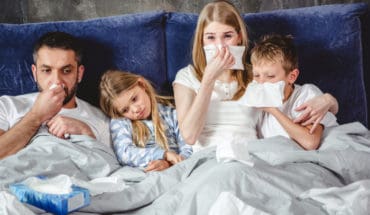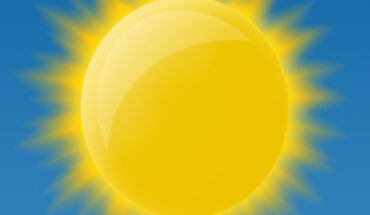Bonfire night celebrations are great fun for adults and kids alike. Unfortunately, darkness, fireworks, trailing fancy dress costumes and undercooked bangers can be a hazardous combination.
According to the Royal Society for the Prevention of Accidents, around 1000 people end up in hospital every year due to injuries caused by fireworks in the four week period around November 5th, with the largest number of accidents occurring at family or private firework parties.
It doesn’t have to end in tears, however, and forward planning can usually eliminate any problems at all. “The ideal thing is to prevent things going wrong in the first place,” says Andrew New, head of training at St John Ambulance. “Do a risk assessment in advance and be prepared. Sometimes things do go wrong, but you should be able to deal with most mishaps.”
Andrew New of St. John Ambulance gives this advice:
BURNS:
DO: Put the area under cold running water for 10 minutes. Lots of the tissue damage actually happens after the initial burn because of heat retained at the burn site. Loosely cover the burn with cling film, which will help to protect the area and keep germs at bay. Most minor burns can be treated at home and will heal naturally. Serious burns, which are full thickness, and cover an area larger than the palm of your hand, should always be treated in hospital.
DON’T: Rub on butter. Don’t burst blisters. The skin provides a sterile protective layer. However, if a blister bursts of its own accord, apply a non-adhesive dressing.
How to avoid problems in the first place:
- Keep friends and family a safe distance away from a fire and any area where fireworks are being let off.
- Young children should not be allowed to hold sparklers, which can burn tiny fingers.
- Always have a means of tackling a fire nearby, like a bucket of water or a hose.
- Tie long hair back and make sure that trailing clothes and scarves are secured away from a naked flame.
BUMPS AND SPRAINS:
DO: Follow the RICE guidelines. Rest the area, apply Ice, Compress it and Elevate it. Damage to ligaments and muscle can be extremely sore, but it is possible to prevent further damage if you take immediate steps to lessen swelling.
A packet of frozen peas, wrapped in a tea towel, make a great icepack because it can be moulded to fit.
Use your hand to apply pressure, or a clean handkerchief.
DON’T: Ignore it if someone cannot put weight on a limb or is in quite a lot of pain which does not subside at all. They may have broken a bone, or seriously torn a ligament. Take them to hospital for a full medical check up or call an ambulance on 999.
How to avoid the problem in the first place:
- Keep outdoor areas well lit. You need to be able to see what you are doing if you are moving around a dark garden. Everyone should have hand held torches to prevent stumbling.
- Wear sturdy footwear. Definitely no sandals and preferably boots with ankle supports.
- Moderate your alcohol intake. Coordination is one of the first things to go when we drink to excess.
CUTS AND GRAZES:
DO: Apply pressure to the wound site and elevate the area to reduce the bleeding. You can use your hand, but try to wash it first.
Minor grazes can be cleaned with cold water and dried. A sticky plaster will help prevent infection.
DON’T: Ignore it if the cut is large, or the bleeding refuses to stop, or there is an embedded object within the wound, take the patient to hospital immediately, or call an ambulance on 999.
How to avoid the problem in the first place:
- Keep children away from sharp objects, such as knives you have been using to chop apples or peel chestnuts.
CHOKING:
DO: In most cases, a casualty should be able to clear an object that is blocked in the throat, but sometimes they may need help. Ask the casualty, Are your choking? Someone with a partial obstruction will be able to answer. A casualty who can’t speak, because they can’t draw breath has a complete obstruction.
Remove any obvious obstructions from the mouth and help the person lead well forwards. Give up to five sharp blows between the shoulder blades with the heel of your hand. If this fails to work, try abdominal thrusts. Stand behind him and put both arms around his upper abdomen. Clench your fist between the navel and the bottom of the breast bone. Grasp your fist with the other hand and pull sharply inwards and upwards, up to five times. If obstruction has still not cleared, dial 999 and alternate between back blows and abdominal thrusts.
DON’T: Stop trying to dislodge the object while you wait for help to arrive or leave the casualty.
How to avoid the problem in the first place:
- Don’t give young children grapes, which can completely block the airway.
- Make sure you provide knives and forks if you are serving steaks so that people can cut them into small pieces.
- Don’t rush your meal and try and supply seating areas.
ASTHMA ATTACK:
DO: Help the casualty find a comfortable place away from the crowds. They will be most comfortable sitting down and leaning forward. Help them take their medication. In most cases, the attack should pass within five minutes.
DON’T: Leave the person having an attack until you are sure they are recovered. If the asthma attack continues for longer than 10 minutes and is not relieved by medication, dial 999.
How to avoid the problem in the first place:
- Adults should know how to control their own symptoms but a growing number of children now suffer from asthma too.
- Make sure you know who has asthma in your party and check that they have their medication with them when they arrive.
- Many kids with asthma are allergic to smoke, so don’t stand them in the way of the fire. Don’t let adults smoke in the house.
Nigel Denby, dietician explains how to enjoy a healthy and nutritious Halloween and bonfire night.
On Halloween night, try apple bobbing, and get the kids to join in. This tradition started in Scotland and it is great fun trying to take chunks out of floating apples. Apples are packed with Vitamin C and fibre and they taste great too.
Dips, marinades, salads, desserts and drinks can be imaginative and tantalising using the very best in local, organic fruits, vegetables and herbs. Make your own!
Try baking sweet potatoes for a change or making chunky sweet potato wedges- just cut into edges, brush with oil and bake for 20 minutes. Sweet potatoes are low in sodium, cholesterol free, fat free, high in fibre, contain minerals and vitamins A, C and E. Sweet potatoes are also more nutritious if cooked with the skin on.
Why not serve up your burgers with a simple homemade tomato sauce? Take a tin of chopped tomatoes and add a little chilli and then some canned mixed beans. Simply simmer over a low heat for around 30 minutes. Cooked tomatoes are packed with lycopene, a powerful antioxidant that help prevent prostate cancer and some other forms of cancer, heart disease, and other serious diseases.
Barbecue safety
- Always make sure you cook chicken, burgers, sausages and kebabs until they’re piping hot all the way through, none of the meat is pink and any juices run clear. This will eliminate bugs such as E-coli 0157, salmonella and campylobacter which can cause serious illness.
- If you’re barbecuing for lots of people, you could cook meat indoors and finish it off on the barbecue for added flavour.
- Wait until the charcoal is glowing red with a powdery grey surface before you start cooking
- Turn the food regularly, and move it around the barbecue to cook it evenly
- Don’t assume that if meat is charred on the outside that it will be cooked properly on the inside.
Further information:
St John Ambulance: www.sja.org.uk
The Royal Society for the Prevention of Accidents. www.rospa.com
- Combination of drugs could prevent thousands of heart attacks - 21st April 2025
- UQ Study Links Poor Teen Diets to Heavy Social Media Use - 21st April 2025
- Gut microbiome could delay onset of type 1 diabetes - 3rd April 2025






